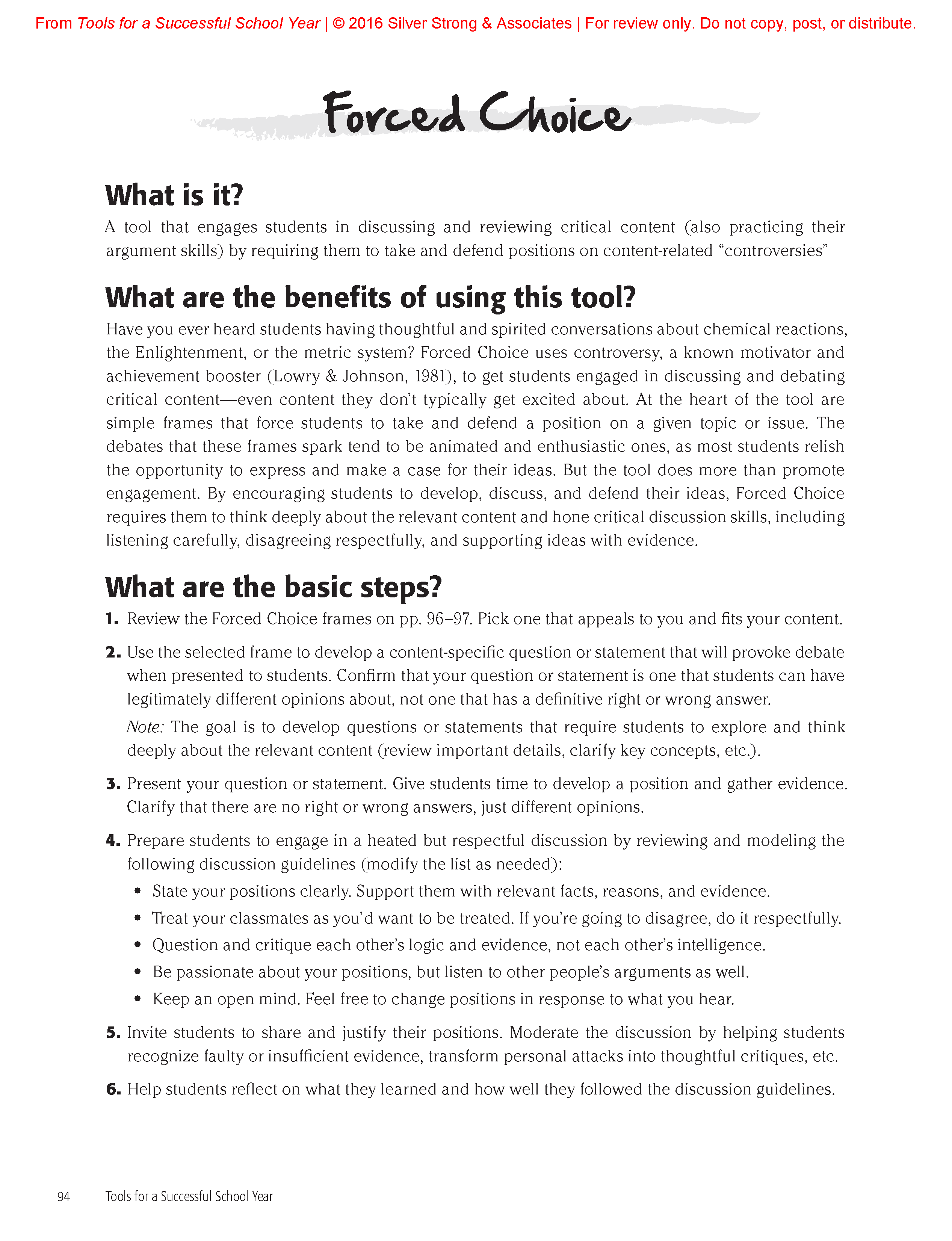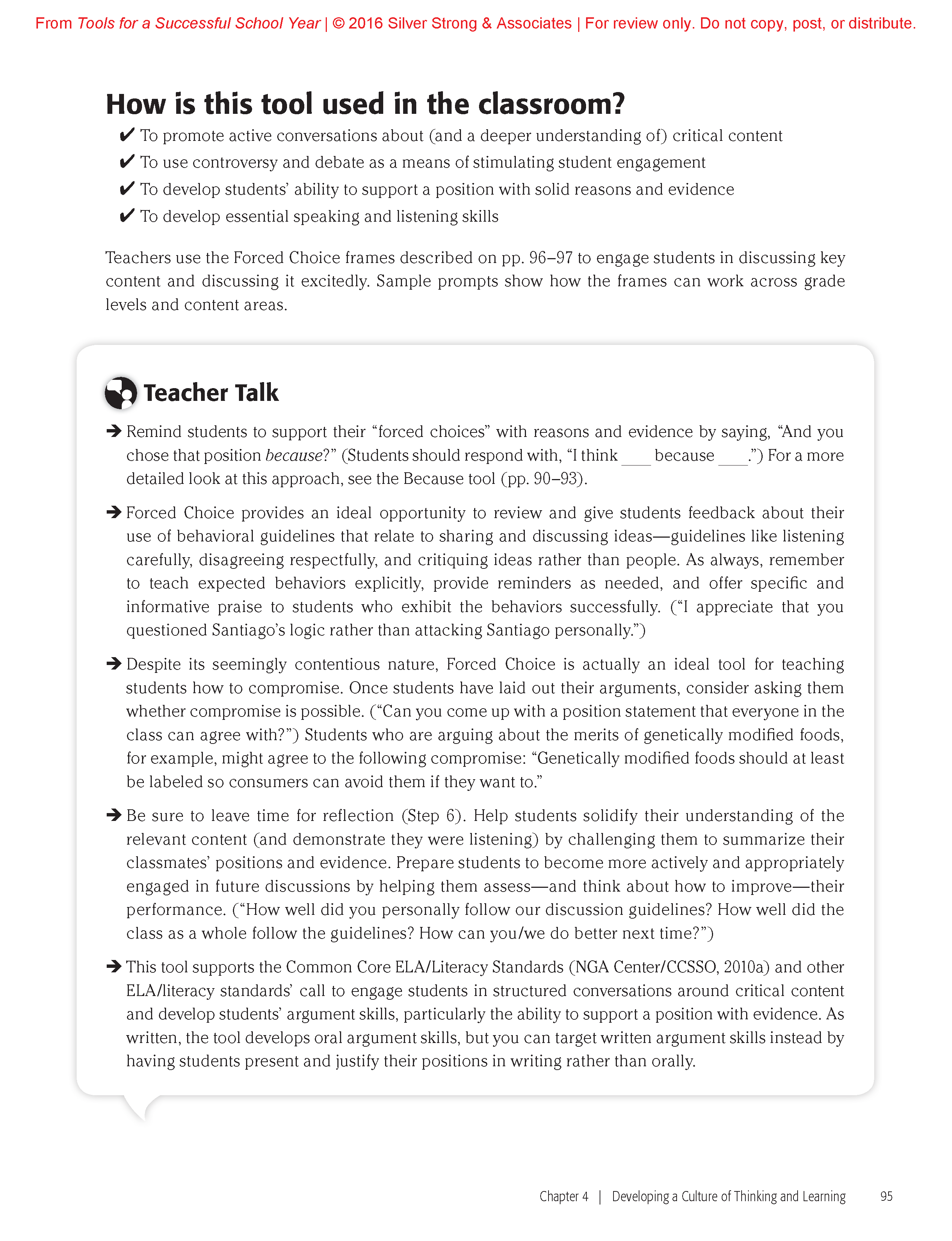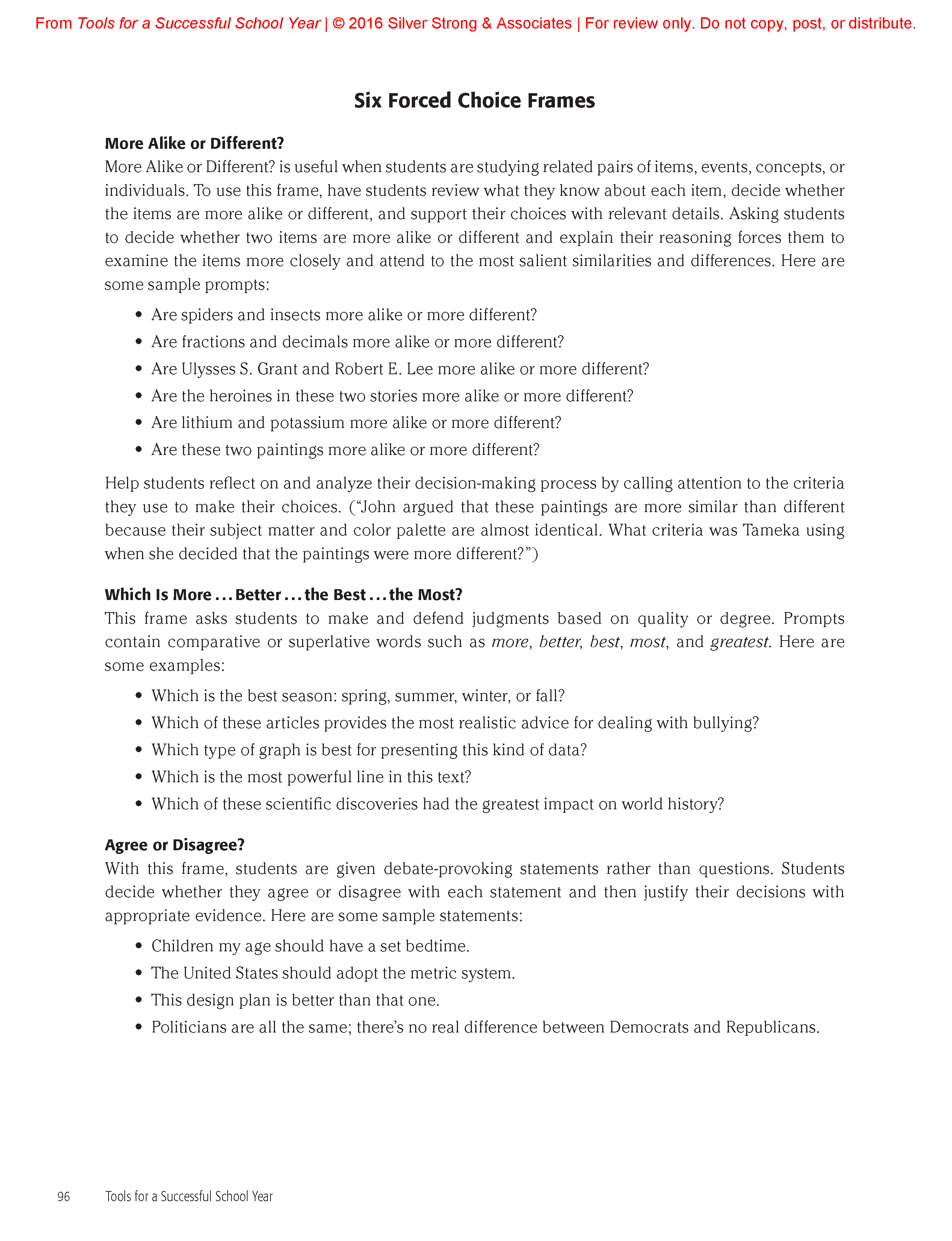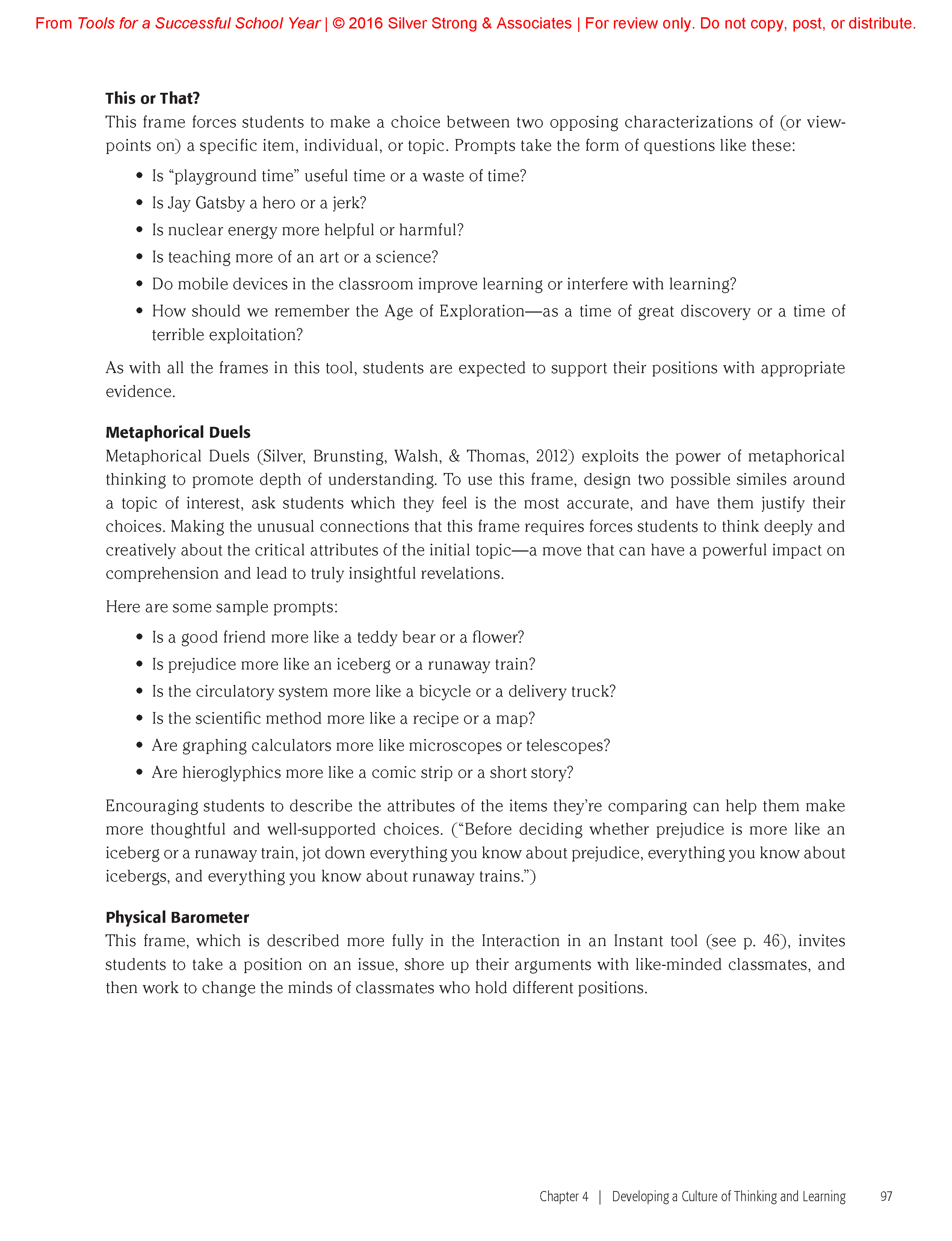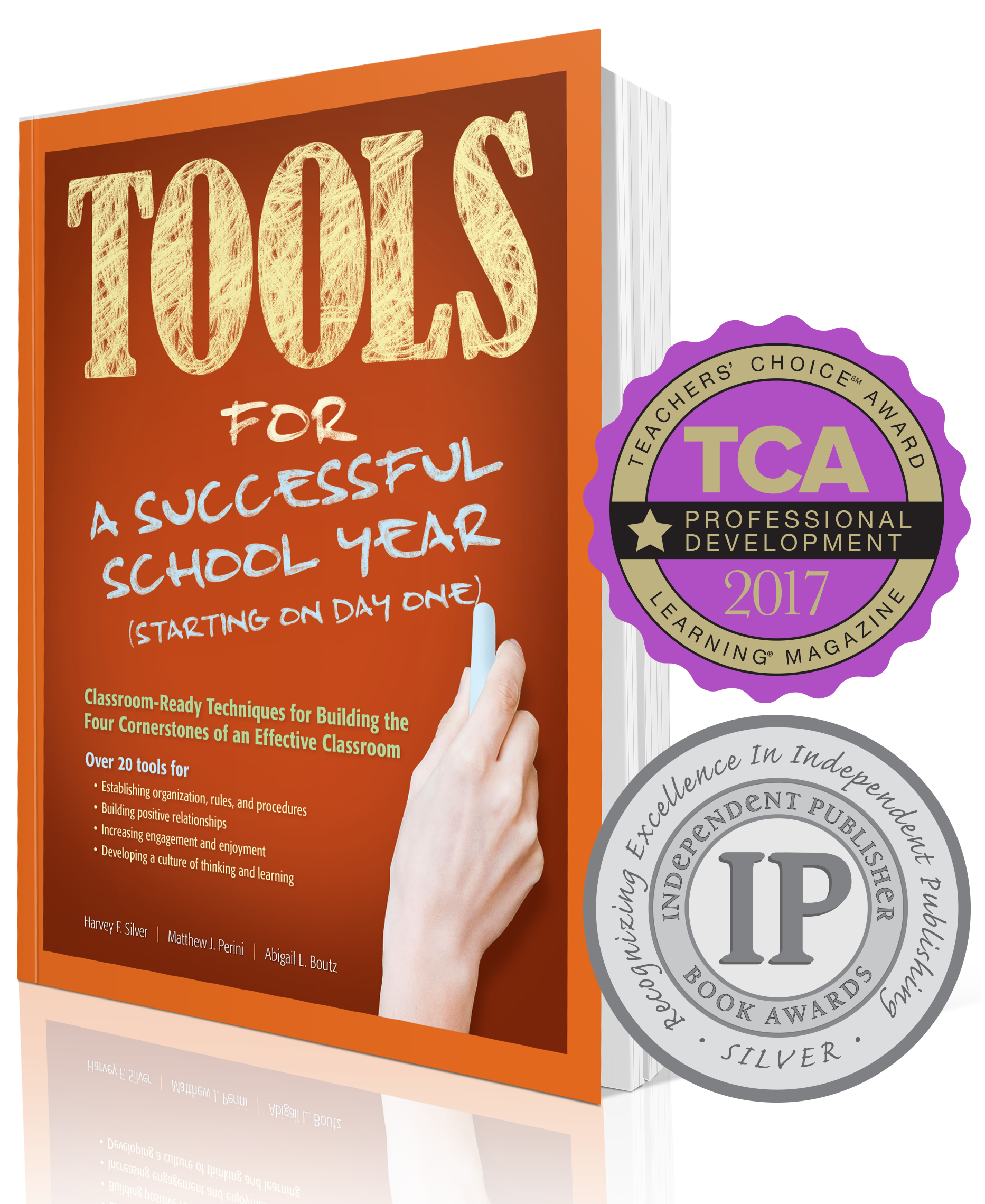Trying a Simple Instructional Tool to Address a Problem of Practice
Using Tools Makes a Difference in Garnering Teacher Support
| by Harvey F. Silver | April 10, 2023 |
The most adept instructional leaders recognize the importance of gaining teacher buy-in before making any meaningful changes in teachers’ instructional practice.
However, in the Educational Leadership article, “Getting More Urgent about Change Leadership,” Douglas Reeves and Bob Eaker write that this “… model of change that depends upon buy-in has failed education leaders because it’s based on the premise that ‘belief precedes behavior’” (Reeves & Eaker, 2023). In fact, the authors note that the latest psychological evidence reveals the opposite: “behavior precedes belief” (Milkman, 2021).
This is why the use of instructional tools and “A Problem of Practice” approach is so important in developing teacher buy-in. In this approach, belief is generated by trying out a simple instructional tool to address a problem of practice. Tools are simple research-based instructional practices that are easy to implement and put into practice in any grade level or content area.
Trying out a tool does not require the teacher to commit to an instructional belief. The success that many teachers experience is the proof, as they say, in the pudding. The result of using the tool becomes the evidence that pragmatic teachers need to see that it works: When students become more engaged in their learning and their thinking is deeper, the belief follows the practice.
Our instructional tools address four questions:
- What is it? Never more than a sentence.
- What are its benefits? Never more than a paragraph.
- What are the steps? Never more than working memory can handle, 7 steps.
- How to use it? Lastly, examples are shown in different grade levels and content areas.
Many tools have a Teacher Talk section as well, which includes real advice from other teachers who have used the tool and found ways to make it work in their classroom setting.
Sample TOOL from Tools for a Successful School Year.
Our award-winning Tools for Today’s Educators series of books have been used by thousands of educators in hundreds of schools.
My friend and colleague, Bryan Goodwin, president of McREL International, says that the use of instructional tools is one of the best ways to accelerate teacher growth.
Bryan raises the question:
“Imagine if every year, every teacher in America got a little bit better at teaching. What would be the impact?”
He proposes the change in schools would be greater than any other initiative we have tried to improve teaching.
Tools make a difference!


